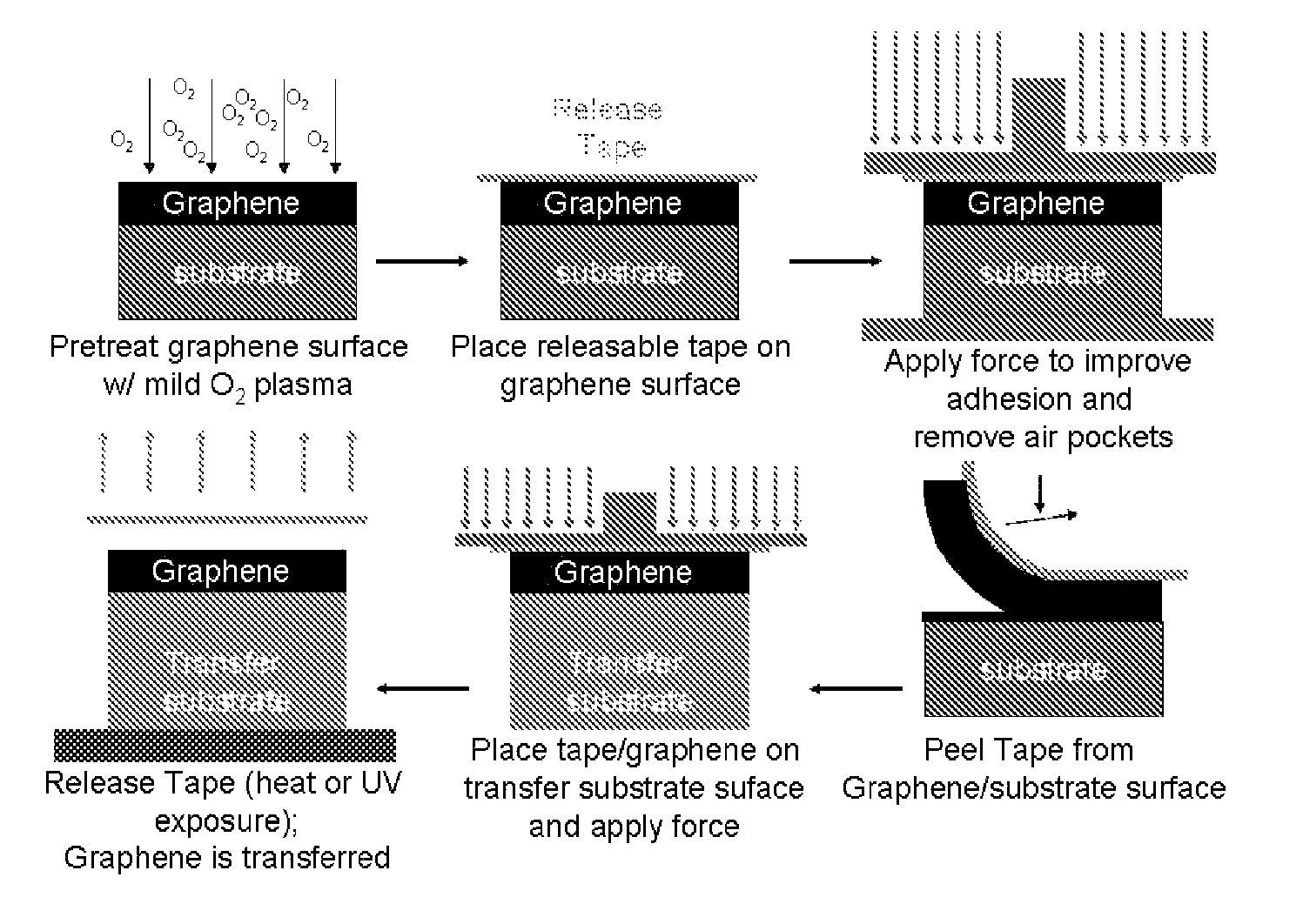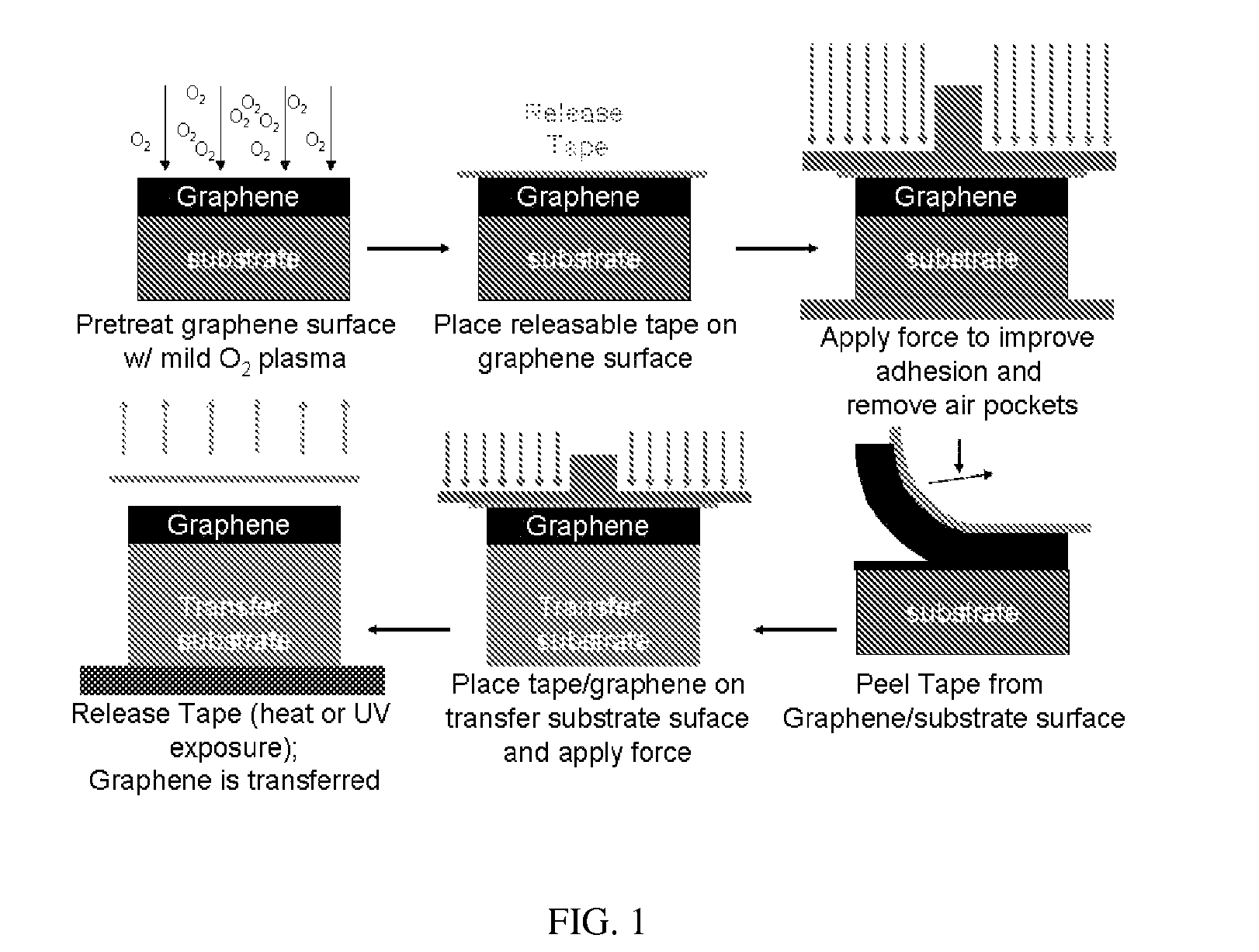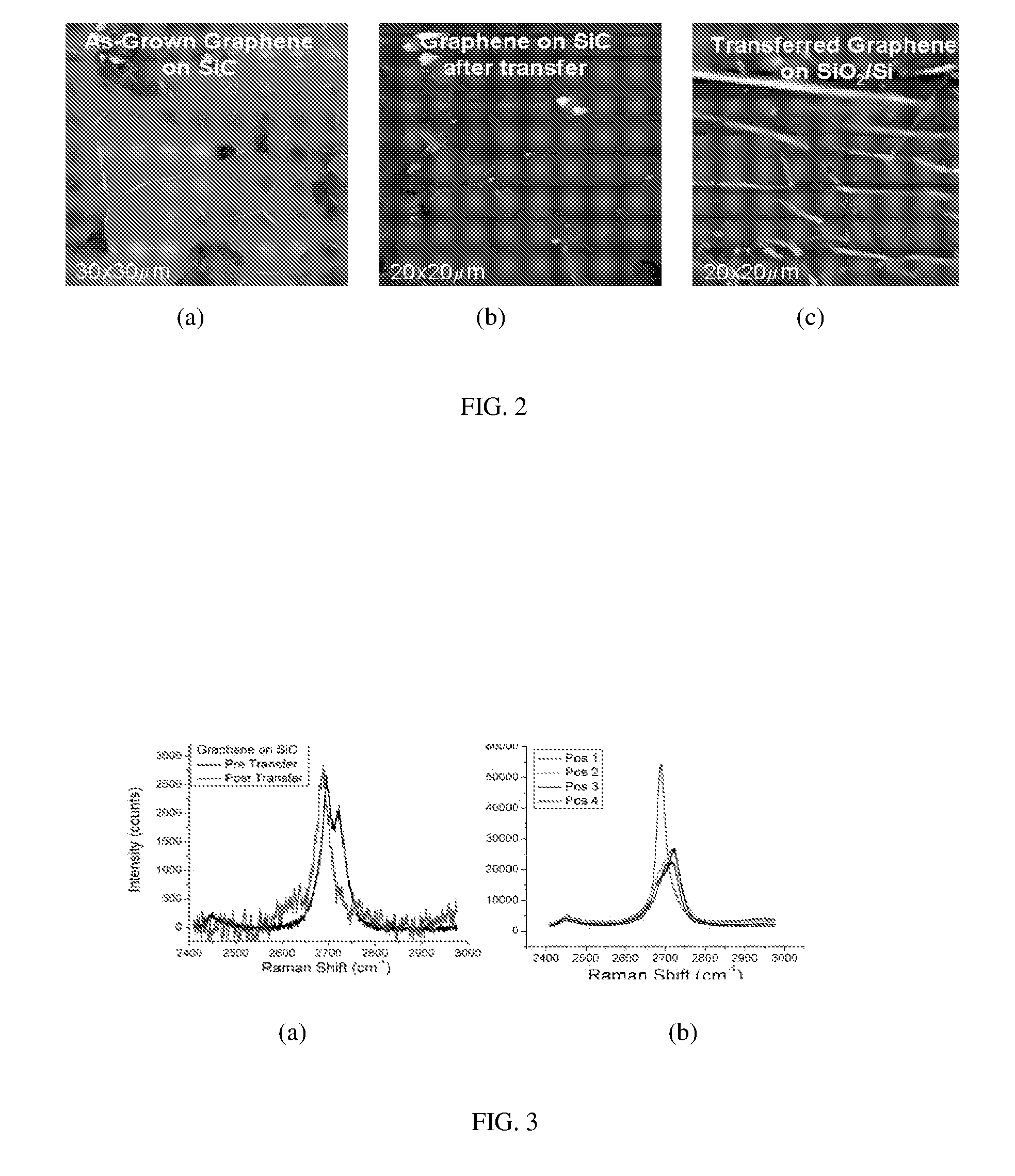Method for the reduction of graphene film thickness and the removal and transfer of epitaxial graphene films from SiC substrates
a graphene film and epitaxial technology, applied in the field of graphene and polycrystalline diamond films, can solve the problems of low efficiency of graphene-based electronics mass production, and large thickness of epitaxial graphene films, and achieves easy fabrication of electronic or optoelectronic devices, easy characterization of graphene layers, and simple oxygen reduction process
- Summary
- Abstract
- Description
- Claims
- Application Information
AI Technical Summary
Benefits of technology
Problems solved by technology
Method used
Image
Examples
Embodiment Construction
[0017]The present invention is directed towards a method enabling the transfer of large area graphene films from a donor substrate (e.g. SiC) to a handle substrate (e.g. silicon). The method involves three highly beneficial processes for the removal, reduction in layer thickness (number of graphene layers) and transfer of large areas of epitaxial graphene films from silicon carbide (SiC) substrates. Graphene is the name given to single sheets of graphitic carbon, which has been shown recently to possess electrical properties that are highly desirable, such as high carrier mobilities (1,000-200,000 cm2 / Vs), ballistic electron transport, and quantized optical transmission. There are primarily three methods for the creation of graphene-based devices (including both electronic, sensing, and MEMS devices). Graphene on SiC and metal-catalyzed graphene both offer the ability to create large-scale (>wafer scale) graphene films that may then be manipulated using the processes described here ...
PUM
| Property | Measurement | Unit |
|---|---|---|
| area | aaaaa | aaaaa |
| temperatures | aaaaa | aaaaa |
| temperatures | aaaaa | aaaaa |
Abstract
Description
Claims
Application Information
 Login to View More
Login to View More - R&D
- Intellectual Property
- Life Sciences
- Materials
- Tech Scout
- Unparalleled Data Quality
- Higher Quality Content
- 60% Fewer Hallucinations
Browse by: Latest US Patents, China's latest patents, Technical Efficacy Thesaurus, Application Domain, Technology Topic, Popular Technical Reports.
© 2025 PatSnap. All rights reserved.Legal|Privacy policy|Modern Slavery Act Transparency Statement|Sitemap|About US| Contact US: help@patsnap.com



